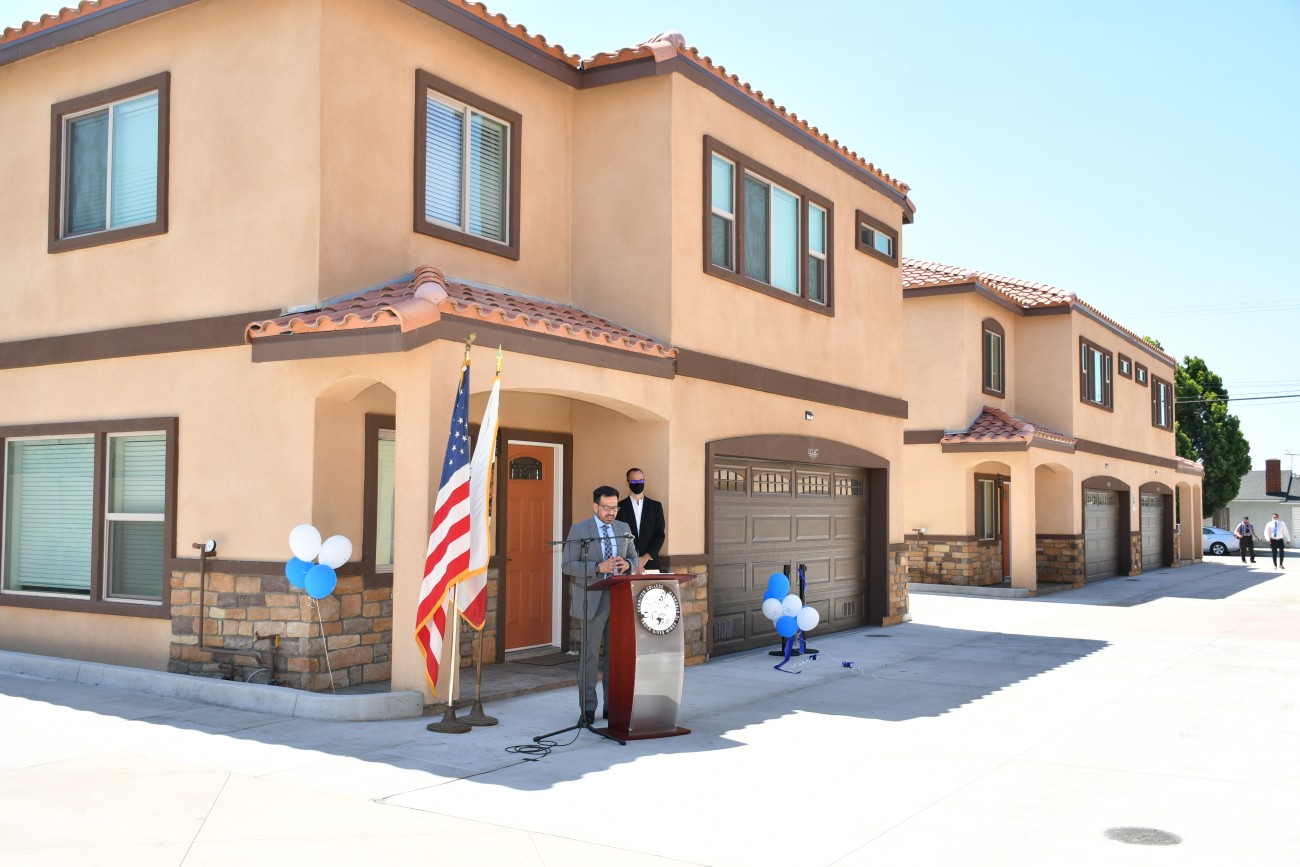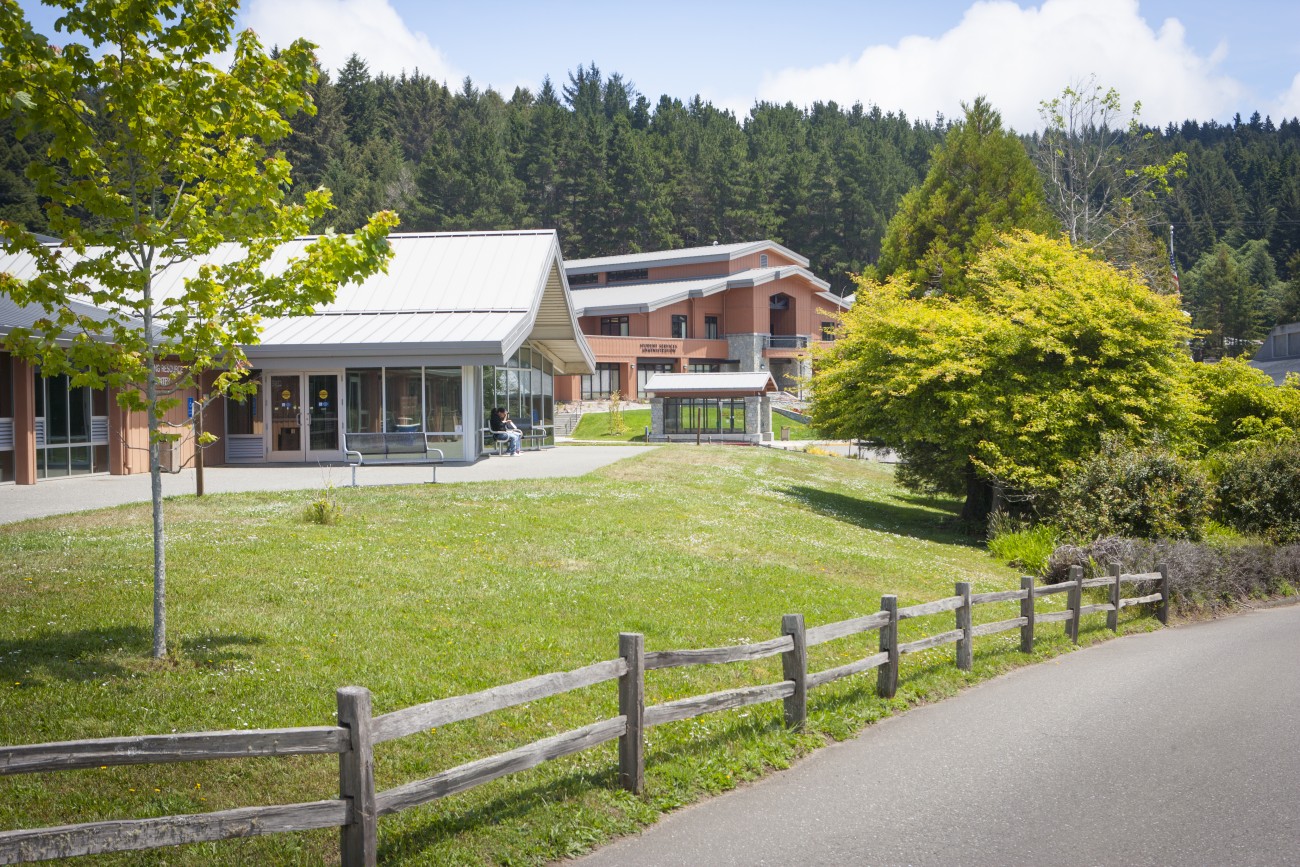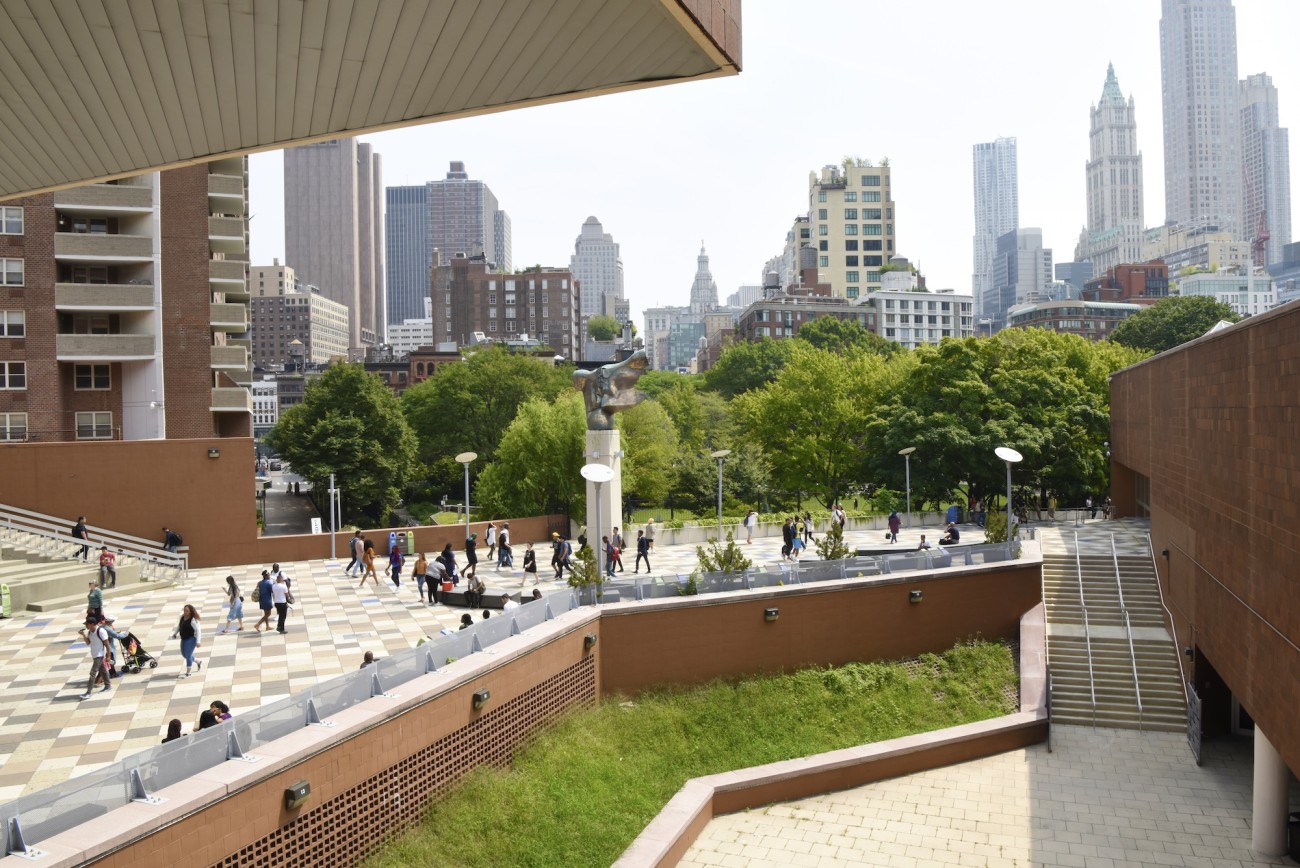
A Place to Call Home
Housing insecurity is prevalent among college students, particularly those in community colleges. Fourteen percent of community college students surveyed in 2022 experienced housing insecurity—defined as a circumstance that makes losing permanent housing (e.g., missing a rent payment or living in an overcrowded environment) more likely. A 2019 survey conducted by the Hope Lab in California found that nearly one in five community college students experienced homelessness—defined as living situations such as couch surfing, living in a car or motel, or living outside.
Several factors make housing and homelessness a significant problem for college students. These include rising tuition, lack of affordable housing, and financial aid that doesn’t cover the costs of food, gas, and childcare. Many students are also reluctant to seek help, often because of trust issues, from student support services on campus and within the community from social services.
“Our friends and neighbors who are experiencing homelessness have incredibly complex circumstances, which is why many people pass an encampment and feel that complexity and are stunned with the inability to do something that feels like it is going to move the needle,” says Pamela Sepulveda, a case manager at Cerritos College in California, U.S. “As a social worker, I would ask people, rather than be overwhelmed by the entirety of the issue, to find that space where you can make an impact and do that well. That is how we chip away at a very large complex issue. That’s the approach many community colleges, including here at Cerritos College, are taking as we look to remove barriers for our own student populations.”
Find out how Cerritos College and two other community colleges are addressing homelessness on their own campuses.
It Takes a Village
In December 2022, Jacqueline Benitez graduated from Cerritos College with an associate degree in early childhood development. She then began working on campus in the Child Development Center. Today, she is enrolled in a four-year degree program at California State University, Long Beach, studying early childhood development and family services. She has a dream of opening her own childcare center.
Sometimes she still can’t believe her achievements, especially when she thinks back to 2020, when she was without a home and about to drop out of college.
Because her mother was incarcerated, Benitez was raised by her grandmother. Shortly after she became a Cerritos College student, her grandmother passed away. Her grief was soon overshadowed by desperation. Losing her grandmother also meant losing her home.
“I didn’t have anywhere to go. I just remember this immense feeling of dread knowing that it was going to be a struggle to survive,” says Benitez. “I was looking for shelters and I had decided that I would need to drop out of school because I knew I would have to work more than full time in order to support myself.”
An on-campus counselor had another idea. She told Benitez about The Village, a brand-new housing option for Cerritos College students experiencing homelessness. Benitez applied for housing at The Village and met the qualifications. For the rest of her time as a student, she would have a safe and secure place to live adjacent to campus, complete with an on-site case manager who looked out for her and helped keep her on track with her studies. She then paid it forward with an on-campus job at Falcon’s Nest, a one-stop shop for students that includes a food pantry and assistance with other basic needs. In that role, she assisted students with the application process for food stamps.

PROVIDING HOUSING SECURITY: Cerritos College President Jose Fierro at the opening of The Village, a housing development for Cerritos College students experiencing homelessness. “Think about the energy it takes worrying about where your next meal will come from or where you are going to sleep. When we can alleviate those stresses, that energy can be focused on academic success,” he says.
“I couldn’t believe how fast it all happened,” Benitez recalls. “I expected it to be so much harder. There had been other times in my life when assistance was promised but never came through. So I wasn’t trusting at first when I heard about The Village. The security of safe housing and all the support that came with it meant everything. My life changed.”
The Village opened in the summer of 2020. The project is a partnership with Jovenes, Inc., a Los Angeles nonprofit that assists homeless and displaced young adults. It features seven townhomes with a mix of free and affordable rental options that house up to 28 students between the ages of 18 and 25.
Jovenes serves as the lead housing service provider for The Village, providing day-to-day management, resident selection in conjunction with college staff, on-site supervision, case management, maintenance, and, working with college staff, support to help students complete their educational goals.
The college secured the property using its general fund with additional support from local and state grants.
The hallmark of student support at Cerritos College, which has an average enrollment of 23,000 students, is a commitment to “wrap-around” services aimed at alleviating the many socioeconomic barriers that can get in the way of an education, says Jose Fierro, President and Superintendent of the Cerritos Community College District.
“Think about the energy it takes worrying about where your next meal will come from or where you are going to sleep,” he says. “When we can alleviate those stresses, that energy can be focused on academic success.”
Data proves that strategy is working, says Pamela Sepulveda, a social worker and case manager at the college. “When we look at students in all of our housing assistance programs, they are surpassing the general student population in academics,” she says. “They have higher GPAs, higher rates of completing degrees in two years, and higher rates of matriculating to four-year institutions. And, in one of the strongest indicators of academic success, they have higher rates of participating in a comprehensive education plan, with 93% participation compared to 68% among those not in a housing program.”
Beyond the data, Sepulveda says, it is the individual stories of students like Benitez that prove the benefits to students when individual circumstances are addressed through a holistic system of student support.
“I feel passion and excitement knowing that students have options where otherwise there were dead ends,” says Sepulveda. “We don’t need any more sad stories about college students living in their cars. We need more hopeful, empowering stories about students trusting in their campus communities, and when they ask for help, the community is equipped to provide that assistance.”
And one of the best ways to be equipped, she adds, is by partnering with local agencies that have the expertise and understanding of community resources to overcome barriers related to broader issues such as poverty, affordable housing, and mental health.
Pointing to examples of students like Benitez, Fierro says, “If we don’t address the basic needs of our students, we are squandering talent. What I mean by that is you often find students who are brilliant at highly selective institutions. They come from environments in which education is prioritized. They are set up for success. We also have incredibly gifted people in communities that are underserved. But they lack access to education that would allow them to shine. If we address the whole student and remove some of the barriers preventing them from getting an education, maybe we find the person that will finally cure cancer.”

A RURAL CAMPUS IN NOTHERN CALIFORNIA: College of the Redwoods offers a room and board scholarship for students experiencing homelessness.
Out of the Woods
In 2019, College of the Redwoods in Northern California conducted a survey that showed more than 258 students identified as homeless or housing insecure.
“This was an underrepresentation,” says Marty Coelho, Executive Director of College Advancement and the College of the Redwoods Foundation. “There was a stigma to identifying oneself as homeless. Our service area is comprised of three large rural counties with not enough living wage jobs and a high rate of homelessness. We got to the point where we had students camping in our campus forest. We would see students heading to class with their bedrolls on their backs. Our president Keith Flamer challenged us to find a solution.”
The College of the Redwoods Foundation and the college’s Student Services Department established the Redwoods Room & Board Scholarship Program to support students who are experiencing homelessness or are housing insecure. The scholarship provides semester grants so that these students can live in CR's residence halls and receive a meal plan to the cafeteria.
“We have a robust student services team and a strong culture of supporting our students,” says Coelho. The online scholarship application provides a means for students to self-identify as housing insecure through questions related to housing status and history. The scholarship comes with requirements, which include maintaining a minimum 2.0 GPA, carrying a fulltime course load unless circumstances prohibit, and holding a job on campus or in the community.
Students’ own voices played a key role in securing donors to support the scholarship. “We had a student who was experiencing homelessness share her story with community members,” says Coelho. “She lived 25 miles from campus in someone’s back yard in a tent. There was no family support. She didn’t have a car, so she took a bus to campus. In the evenings when she returned from school, the bus only went as far as the airport. From there, she had to walk 10 miles up Highway 101 in the dark to get to her tent.
"These students have a level of resilience that is truly incredible, and they’re going to earn their education whether we help them or not. The question becomes though, why should they have to struggle so hard just to survive while they earn their education? Isn’t this a group worth supporting? Our community agreed and the scholarship was established.”
The scholarship, he acknowledges, is a stop-gap solution with the goal of giving students the security to concentrate on their education, which ultimately provides the hope and opportunity for long-term solutions.
But for now, Coelho finds a sense of relief in seeing that students are no longer living in the forest.

“I’m a first-generation college student with rheumatoid arthritis. I’m in my 30s and recently had my left knee replaced. It was a big weight off my shoulders knowing I had a dorm room on campus. I never thought I would go to college, and now I’ve been accepted to California State University, Sacramento!”
Good Neighbors
What makes community college students special, says Marva Craig, Vice President for Student Affairs at Borough of Manhattan Community College, is “they bring their whole authentic selves to us. Imagine a rainstorm. We all have to walk through storms. But our students do it without an umbrella. And the reasons they come to us with broken umbrellas or without umbrellas are as different as each student. It’s our job to see each student and their own unique challenges and provide the support they need to overcome the odds.”
When it comes to one of the most expensive cities in United States, affordable housing can be the biggest obstacle of all.
BMCC’s New York City campus is located in lower Manhattan, in the shadow of the Statue of Liberty, not far from Trinity Church Wall Street. “Trinity is a neighbor and has been a friend and partner to BMCC for a long time. They are on a mission to impact food and housing insecurity in lower Manhattan. They saw the need among college students in their own backyard and came to us with a desire to make an investment,” says Karen Wilson-Stevenson, Interim Vice President, Office of Institutional Advancement and Chief Operating Officer for the BMCC Foundation.
The church and the college previously worked together on Project Impact, an initiative supporting students who are or live with someone who has been impacted by the criminal justice system.
In 2021, Trinity offered BMCC a $2 million grant to provide free housing to students experiencing homelessness and housing insecurity.
With that generous support, BMCC partnered with City College of New York, an affiliate four-year institution that has residence facilities. Through the program, 40 BMCC students can live rent-free in one of CUNY’s apartment-style residence halls for up to three years.
To qualify for the program, students must take at least nine credits, attend academic tutoring, maintain GPAs of at least 2.0, participate in internships, and participate in advising to build plans for financial success after graduation. They must also be housing insecure, which they can document through the application and interview process.
“Beyond the academic success we see when students have housing security, we are seeing student engagement on campus,” notes Craig. “We have five students in ‘the dorm project,’ as we call it, involved in student government, with one of them serving as president. It’s remarkable to see a student come from a homeless situation to become a student leader. These students are ambassadors for on-campus support programs. Because of them more students will have the trust in us to ask for help, rather than dropping out.”
“We are providing a big step toward long-term solutions for these students,” says Wilson-Stevenson. “I’ve worked in the area of housing and homeless services, and I understand this is a complex issue. There are no one-size-fits-all solutions. During the time these students spend with us and avail themselves of services, programs, and opportunities, they gain the confidence that can lead to changing the trajectory of their lives. All you have to do is come to a commencement ceremony to see the transformations and the possibilities that lay ahead for them.”

BIG CITY CAMPUS: Borough of Manhattan Community College is part of New York City’s lower Manhattan neighborhood, not far from the world-famous Financial District. Through a grant from nearby Trinity Church Wall Street, students experiencing homelessness have options for secure and safe housing.

Want full access to CASE resources? Get the info and inspiration you need to succeed. Join CASE today.
About the author(s)
Ellen N. Woods is Writer/Editor at CASE.